#platypterygius
Text
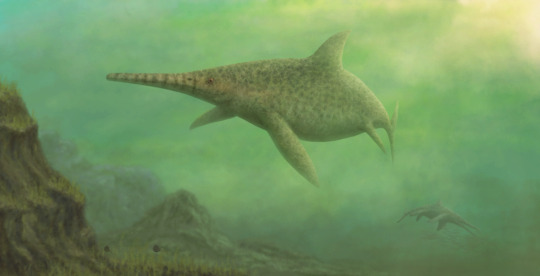
Platypterygius australis
#my art#paleoart#platypterygius#ichtyosaur#mesozoic#cretaceous#marine reptile#nature#digital art#reptile#ocean#aquatic#extinct#prehistoric#animal#paleo#paleontology
62 notes
·
View notes
Text
Palorchestes, a cenozoic weird-faced marsupial
Pelagornis, a cenozoic pseudotoothed birds
Phascolonus, a cenozoic giant wombat
Phoeniconotius, a cenozoic buff flamingo
Platypterygius, a cretaceous icthyosaur
Procoptodon, a cenozoic short-faced kangaroo
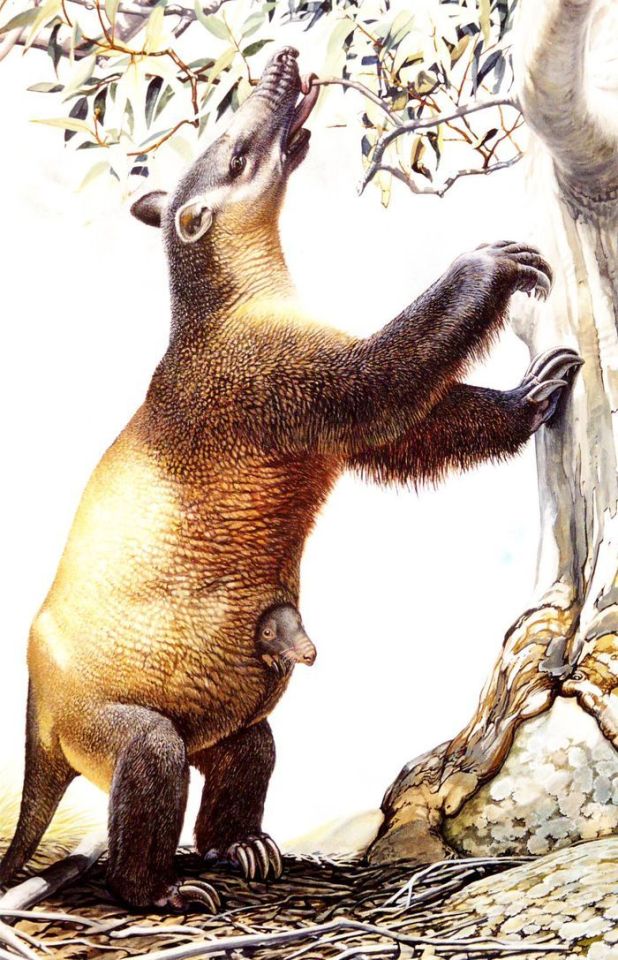

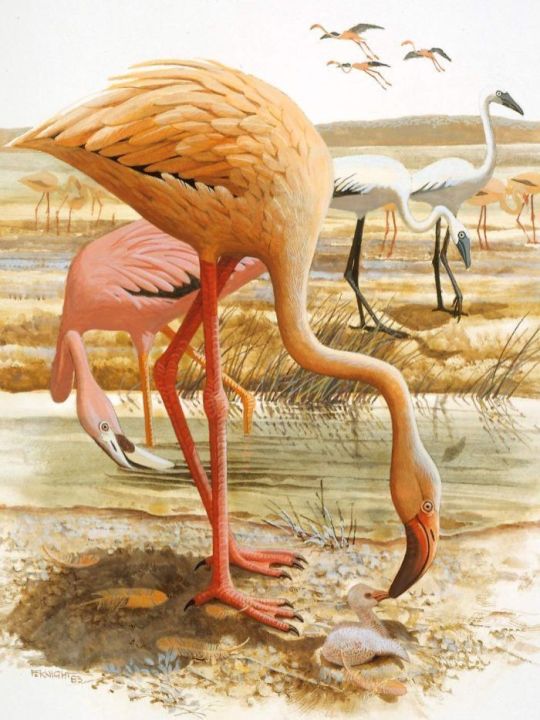



#palaeoblr#australian fossil alphabet thing#megafauna#Palorchestes#Pelagornis#Phascolonus#Phoeniconotius#Platypterygius#Procoptodon
22 notes
·
View notes
Text


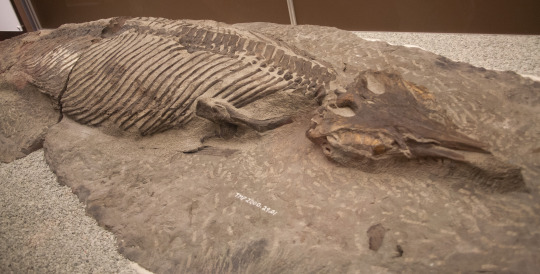


Platypterygius
(temporal range: 113-93.9 mio. years ago)
[text from the Wikipedia article, see also link above]
Platypterygius is a historically paraphyletic genus of platypterygiineichthyosaur from the Cretaceous period. It was historically used as a wastebasket taxon, and most species within Platypterygius likely are undiagnostic at the genus or species level, or represent distinct genera, even being argued as invalid.[1] While fossils referred to Platypterygius have been found throughout different continents, the holotype specimen was found in Germany.
10 notes
·
View notes
Text
All animals will behave as they would in the wild (or closest approximation for prehistoric species) except your defender(s) will not cause friendly fire. Any attempt to harm and/or eat your defender(s) will cause them to abandon you.
#poll#wet beast wednesday#cnidarians#jellyfish#cephalopods#squid#fish#elasmobranch#sawfish#pinniped#prehistoric life#extinct animals#ichtyosaurs#mosasaurus#plesiosaur#marine life#marine biology#sea snake
38 notes
·
View notes
Text
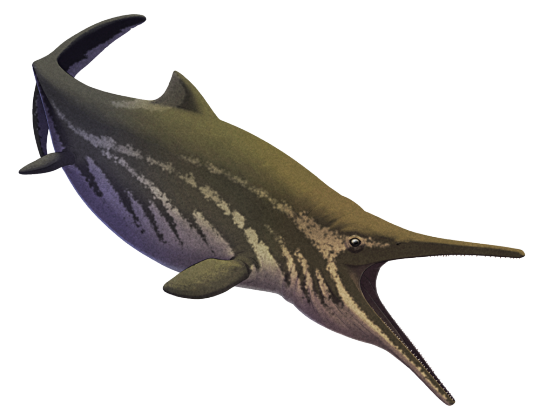
The first definite ichthyosaur fossil found in Colombia was a single well-preserved skull, found in Early Cretaceous deposits dating to between 130 and 112 million years ago.
Although first discovered in the 1970s, this marine reptile wasn't described until the late 1990s, at the time being named as a species of Platypterygius. But since then more pieces of the skeleton have been recovered, and the Platypterygius genus has been found to be a wastebasket taxon in need of revision, so in 2021 the Colombian ichthyosaur got a more detailed redescription and its own distinct name: Kyhytysuka sachicarum.
Kyhytysuka was a mid-sized ichthyosaur, about 5.5m long (18') – about the size of a small modern orca – with a large head and a long robust snout. Its teeth varied in size, shape, and spacing along its jaws, with several different regions that were specialized to catch, slice, and crush its prey.
It could also open its jaws very widely, possibly up to an angle of 75°, suggesting it was able to tackle particularly large prey such as other marine reptiles. Possible soft tissue preservation around its lower jaw might also be evidence of elastic connective tissue that would have allowed its throat to expand out while swallowing big prey items.
This makes Kyhytysuka the first known example of a Cretaceous-aged ichthyosaur with an apex predator lifestyle, convergently evolving a similar ecological role to some earlier Triassic and Jurassic species.
———
Nix Illustration | Tumblr | Twitter | Patreon
#science illustration#paleontology#paleoart#palaeoblr#kyhytysuka#ophthalmosauria#ichthyosaur#marine reptile#art
355 notes
·
View notes
Text

A pair of Platypterygius sachicarum, probably the most common icthyosaur of the Mid-Cretaceous, at home in an inland sea 130 million years ago in what is now Colombia. Based off of a specimen found from the Villa de Leyva site.
23 notes
·
View notes
Text

Time for the second entry of Dinosaur Month 🦕
The Planarostromimus (Planaroste to its friends) is a deadly, deep-sea predator that uses its specialised mimicry to manipulate its prey into traps.
The planaroste is inspired by the Platypterygius longmani. And by "inspired", I mean the planaroste can swim and is vaguely dolphin-shaped. Regardless, you can learn more about the Platypterygius and other Australian dinosaurs from the Australian Museum here.
Where the Platypterygius is believed to have had excellent eyesight, I wanted my planaroste to excel using a different sense. As a result, I gave it a sort of echo-location, where its Echo Scream can ping the whereabouts of its prey, making it easier to attack those targets. Also, its mimicry and tendency to laugh at its prey were inspired by the lyre bird and kookaburra, respectively (though neither bird use their talents as maliciously as the planaroste).
10 notes
·
View notes
Text
0 notes
Text
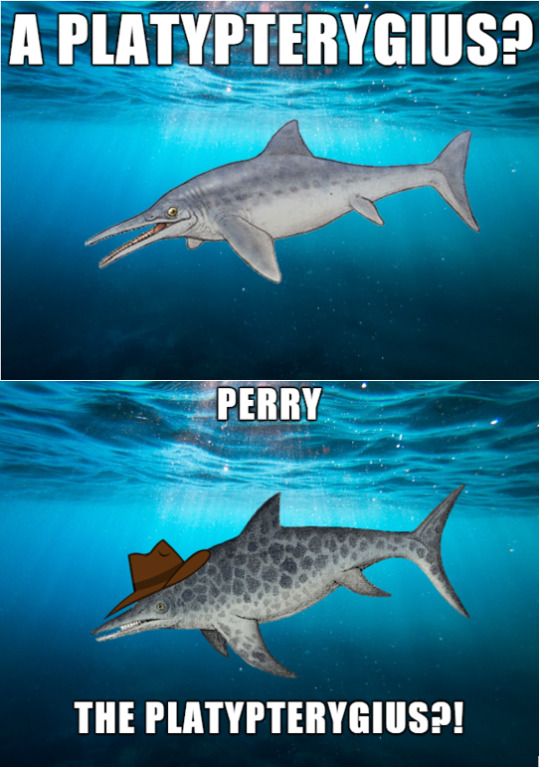
This idea has been living in my head for months
"Peeerrrryyyy.... Perry the Platypterygius!"
#platypterygius#perry the platypus#phineas and ferb#paf#marine reptile#ichthyosaur#fedora#prehistoric#perry#meme#paleo meme#paleontology#underwater#hat#prehistoric sea#prehistoric ocean#prehistoric meme#made on word#imgur
416 notes
·
View notes
Text

Google search engine:

#paleontology#ichthyosaur#platypterygius#Anyway so I searched up 'when did platypterygius come out'#and there was absolutely no information or elaboration
185 notes
·
View notes
Text
Platypterygius platydactylus, P. americani, P. australis, P. hautali, P. hercynicus, P. longmani, P. kiprijanoffi, P. ochevi, P. sachicarum
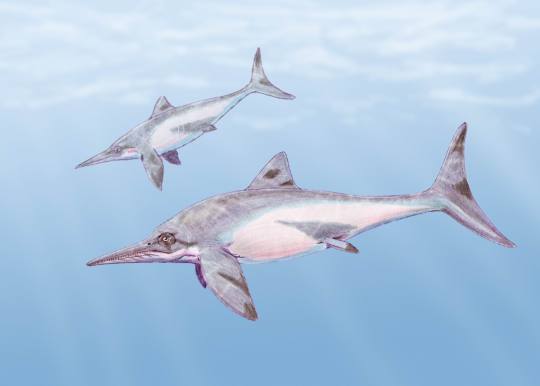
Art by: Dmitry Bogdanov, CC BY 3.0
Name: Platypterygius platydactylus, P. americani, P. australis, P. hautali, P. hercynicus, P. longmani, P. kiprijanoffi, P. ochevi, P. sachicarum
Name Meaning: Flat wing
First Described: 1922
Described By: von Huene
Classification: Chordata, Tetrapoda, Reptilia, Ichthyosauria, Ophthalmosauridae, Platypterygiinae
Platypterygius was an ophthalmosaurid ichthyosaur and an apex predator. Platypterygius had a worldwide distribution, as it cruised the seas of the Early Cretaceous to part of the earliest stage of the Late Cretaceous. A fossil specimen of P. australis was discovered with gut contents of its last meal before it perished. In the stomach, consisted of Nanantius, which is an enantiornithine bird/dinosaur and some sea turtles. In addition, Platypterygius had greater hyperphalangy in its fore flippers in contrast to other known ichthyosaurs. Interestingly, Platypterygius may have been deaf due to its inner ear bones being way too thick to pick up any underwater vibrations in order to “hear”.
Sources:
https://www.kronosauruskorner.com.au/museum/collections/platypterygius
http://www.prehistoric-wildlife.com/species/p/platypterygius.html
https://en.wikipedia.org/wiki/Platypterygius
#Platypterygius#palaeoblr#paleontology#palaeontology#prehistoric#Mesozoic#ancient marine reptiles#Not a dinosaur#ichthyopterygia
23 notes
·
View notes
Photo

Denizens of the Cambridge Greensand of England, ~100 million years ago...
Macrurosaurus, Platypterygius (w/ammonite), Anoplosaurus and Ikrandraco (yes, “Ikran” as in the flying creatures from Avatar, named because of the crest on the underside of its jaw!).
#paleoart#paleontology#dinosaur#sauropod#marine reptile#ichthyosaur#ankylosaur#pterosaur#ikran#avatar#acrylics#painting#natural history#scientific illustration#cretaceous#fossils
187 notes
·
View notes
Text

Finished yet another 3D model on one of the reptiles of the past which, in this case, also lived in those seas that covered our peninsula millions of years ago.
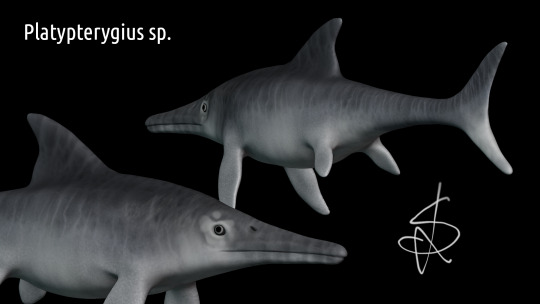
Platypterygius sp. was a huge ichthyosaur up to 7 meters long that lived in the mid-Cretaceous and was among the last fossil ichthyosaurs before their extinction.
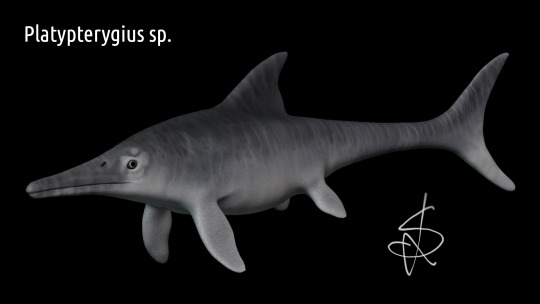
All made with the always trusted Blender 3D on Linux Mint 20.3 MATE distribution.
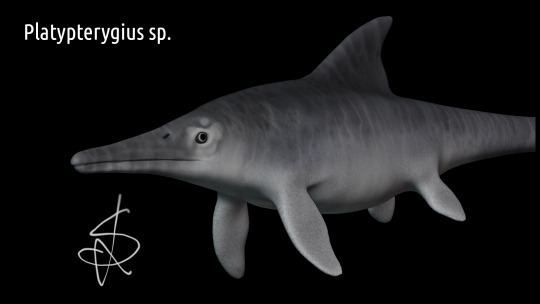
#animals#zoology#paleoart#art#dinosaur#paleontology#blender3d#nature#mesh#sculpting#scultpure#3dsculpting
58 notes
·
View notes
Video
wightcoastfossils
Not everything in our Cretaceous seas was an ammonite. This is a section of 90 million year-old rib from a marine reptile, an uncommon find here on the Isle of Wight!
It’s most likely from the large ichthyosaur Platypterygius, the most common genus we encounter in our late Cretaceous marine rocks. This agile pelagic predator hunted fish and cephalopods in the warm waters of the chalk seas!
96 notes
·
View notes
Text
0 notes